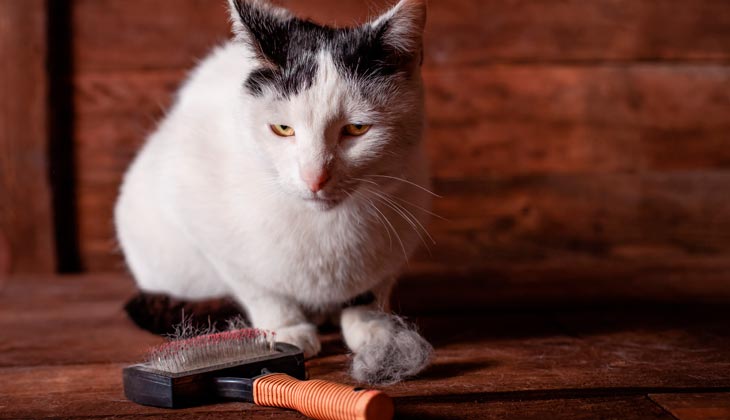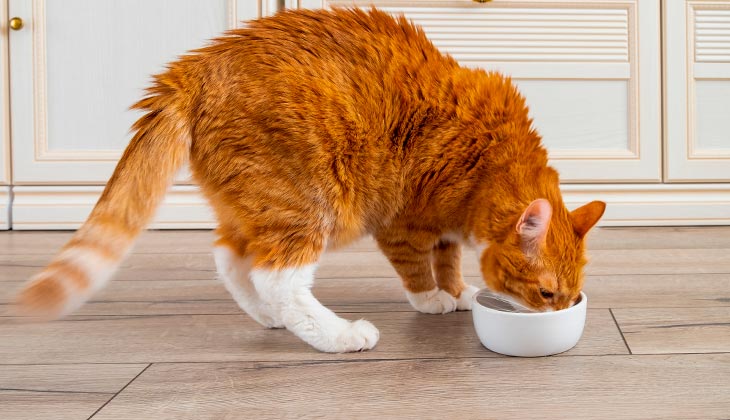The Hairy Facts about the dreaded hairball
You love your feline friend, but you don’t love the cat hairballs. When you hear Kitty gagging and retching it can be unnerving, and when Kitty finally does expel that gross-looking mass on the floor at your feet, it’s rather disgusting. While cat hairballs may seriously gross you out, the truth is, it’s not so great for Kitty either! Read on to find out why cats develop hairballs and some measures you can take to minimize the frequency of furry little presents on your carpet.
CATS

Posted by bravectosouthafrica – 01 April 2021
What is a Hairball in Cats?
Hairball, or trichobezoar, is a damp mass of undigested hair, moistened by bile and other digestive fluids. A hairball is rarely ball-shaped, but usually a slender and cylindrical cigar-shaped sausage, that takes that form when it is squeezed through the narrow passage of a cat’s oesophagus, from its stomach.
According to veterinarians, it is not uncommon for a cat to vomit a hairball every week or two.
How do Hairballs Develop?
Cats spend hours grooming themselves which causes them to swallow a lot of hair as it comes loose. Their rough tongue, which assists in keeping his or her coat clean, is also what channels the indigestible hair down their throats and into their stomach via tiny backward-slanted hook-like projections called papillae. Most of this swallowed hair passes through the digestive tract and ends up in your cat’s litter box but some of it remains in the stomach and gradually accumulates into a wet mass – the hairball.
Are Certain Cats More Prone to Hairballs?
Long-haired cats, such as Maine Coons, seem to be more susceptible to hairballs because they have a lot more hair than their short-haired cousins. Hairballs are also more common in warmer months when cats tend to shed their heavy winter coats. Some cats are simply intent groomers and clean themselves more than other cats which makes them more prone to hairballs.
Are Hairballs a Health Concern for My Cat?
A hairball every week or two is nothing to be alarmed at but if you see or hear your cat retching without producing a hairball it is advisable to consult your veterinarian. Other signs to look out for include lethargy, loss of appetite and constipation. This may be an indication that a hairball has passed from your cat’s stomach into the intestine instead of being regurgitated. This can cause a blockage in the digestive tract. Frequent unproductive hacking may also be a sign of a respiratory ailment and nothing to do with a hairball at all.
If the number of hairballs your cat is producing increases or if your cat is grooming a lot more than usual, speak to your veterinarian. This could be the sign of a different skin condition – like fleas – which may need medical intervention.
Your veterinarian will perform a physical exam to determine if there is an intestinal blockage. He/she may also have bloodwork done to check the functionality of the liver and kidneys, as well as additional diagnostic tests like an ultrasound or x-ray. Your vet will also want a complete history so take note, however gross, of your cat’s hairball habits.
How Can I Prevent Hairballs?
There are expert-recommended ways to manage your cat’s hairballs and their potential complications.
- Grooming. If your cat will allow it, regular brushing can decrease the amount of hair that Kitty ingests during self-grooming. Brushing is a wonderful bonding exercise for you and Kitty but it won’t necessarily stop your cat from self-grooming. Of course, if your cat does not allow brushing, you can take him or her to your veterinarian or to a trusted groomer for a haircut once or twice a year, which is also helpful if your cat will allow it.
- Remedies. There are oral remedies that you can give your cat once or twice a week. This is usually a mild petroleum-based laxative that will encourage the hair to pass without blocking the digestive tract. Also, food choice in general is important in managing hairballs. Foods that are naturally high in fiber are great because they will help move hair through your cat’s digestive system.
- Keep your floors clean. You may not realise that small items like pieces of thread, paperclips and hair bands can be ingested by Kitty. Make sure your floors are spick and span to prevent your cat from swallowing items that could also cause digestive issues.
That awful retching sound is one that brings every cat owner to their feet as they rush to prevent Kitty from regurgitating on the kitchen counter or laptop keyboard. While we cannot stop hairballs from occurring, we hope the information above will assist you in managing your cat’s hairball production so that you, your cat and your furniture can remain hairball-free.

Additional Source: https://www.petmd.com/cat/grooming/evr_ct_cat_hairballs
Subscribe to our Newsletter
Get to know your furry friend better! Sign up for all things dog- or cat-related.
The Hairy Facts about the dreaded hairball
12 April 2021
Help! My dog’s barking mad! Volume 2
12 April 2021
Your Itchy, Scratchy Cat – All About Cat Skin Problems
12 April 2021
The Dog’s Diet: A Bone of contention?
01 April 2021
Mango Fly Worms: How to Spot and Eliminate them
Posted on November 28,2019
Managing Mange And Mites In Your Dog
Posted on June 11,2018
Why Do Cats Purr and How? Learn What Your Cat Is Saying
Posted on October 14,2020
How to Get Rid of Ear Mites in Dogs
Posted on November 06,2019









